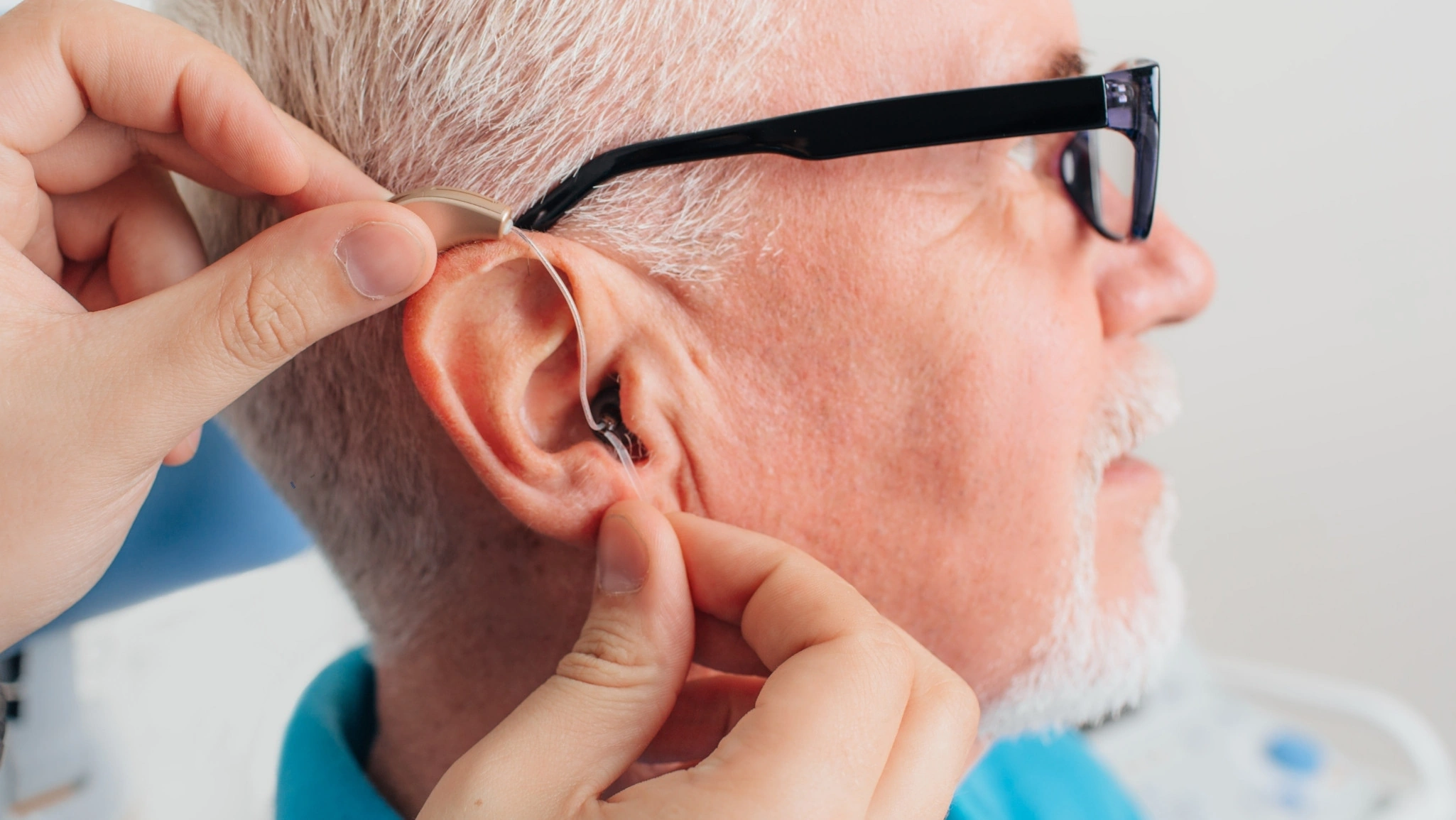
Wait… Does Insurance Even Help?
So—let’s imagine you’re at your favorite noisy diner, maybe halfway through your eggs, and someone across the table cracks a joke. Everyone laughs, forks pause in mid-air, but you? You catch maybe two words and just sort of grin, desperately hoping you didn’t just miss your own punchline. Sigh. If you’re reading this, you probably don’t need a lecture about what hearing loss feels like… more the detective work on what’s out there to help. Specifically: does Medicaid cover hearing aids for adults? Let’s dive in.
Because, spoiler: depending on where you live, Medicaid might have your back. And I do mean “might”—it’s a maze out there.
Medicaid Isn’t One Size
Okay. So Medicaid covers a zillion health things—but hearing aids for adults? That’s a trickier subject. Some days it feels like every state is playing its own game of “guess the rules.” In a bunch of states—New York included—hearing aids are covered for adults if you qualify and cross a few paperwork hurdles. But in others? You might get stuck.
Maybe this feels a little unfair. Who decides which states help out and which don’t? Actually… the federal government lets each state call the shots for adults over 21. That means the answer to does Medicaid cover hearing aids for adults is: “Yes, but only if your state says so.”
Curiosity Time: Why the Mess?
Hearing loss isn’t just an inconvenience; it can hit your relationships, your work, your mental health. Apparently, policy makers are still catching up to this. When you’re under 21, every state’s Medicaid program has to cover hearing aids. But for adults? Nope—some states, like New York, see the value. Others, not so much. If you want to get nitty-gritty, the data from research on Medicaid hearing aid coverage shows only about 28 states cover aids for adults at all—and even within those, the types and frequency covered are a tossup.
What About Other Insurance?
Just to clear the air: Original Medicare? Doesn’t usually cover hearing aids, period. Private insurance is a crapshoot. But, friendly reminder, if you’re wondering about state specifics, check our rundown on Does Medicaid cover hearing aids in NY.
How Medicaid Coverage Works – If You’re Lucky
If you do live in a Medicaid-friendly state (hi, New York!), here’s what actually happens.
Get Ready for Some Paperwork
Step one: your hearing has to be tested… usually by a Medicaid-enrolled audiologist or hearing professional. Most programs want to make sure it’s not just “a little bit” of hearing loss—like, you need significant trouble, often measured by failing to hear certain high or low tones in a test. If you’re nodding along thinking, “That’s me, my TV is always up,” stick with it.
| State | Hearing Aid Coverage for Adults? | Typical Eligibility Rules | Replacement/Frequency |
|---|---|---|---|
| New York | Yes | Medically necessary, specific dB thresholds | 1 every 3 years for adults 21+ |
| California | Yes | Varies, usually moderate hearing loss or above | Varies by plan |
| Missouri | Yes, but limited | Under 21, blind, pregnant, or in nursing home | Varies |
| Texas | Yes | “Mild” loss or greater with need for aid | Varies by plan |
| Many States | No | — | — |
This little chart? Yeah, the messy patchwork is exactly what makes Googling “Does Medicaid cover hearing aids for adults” so… fun (and sometimes exasperating).
Qualifying: It’s Not Just Your Hearing
There’s more to qualifying than just failing a hearing test. You usually need to:
- Be financially eligible for Medicaid in your state
- Get a referral from your primary care doctor
- Have an audiologist or physician certify that you’ll actually benefit from hearing aids
- Use an in-network, Medicaid-enrolled provider (don’t ignore this point!)
Honestly? Hearing loss can happen to anyone. My uncle—he built houses for a living—never thought he’d lose his hearing in his 60s. But after years of power tools and really bad classic rock cassettes? He did. Medicaid in his state (lucky duck, New York) stepped up. But it took a few tries with the paperwork, a lot of help from a super-patient audiologist, and some “you missed a signature here” moments.
So… What Kind of Hearing Aids Does Medicaid Cover?
This part’s a little like picking shoes: you probably won’t get the ultra-snazzy designer ones, but you will get solid, functional options that get you through the day. Medicaid’s focus is on proven, reliable, no-fuss models—the kind audiologists trust for most levels of hearing loss. If you want the details, we break them down over at What Kind of hearing aids does Medicaid cover.
Behind-the-Ear? In-the-Ear? Huh?
Most Medicaid programs offer behind-the-ear models; they’re sturdy, work for the widest range of hearing loss, and are easier to fit and adjust. Some states will also cover in-the-ear versions, but coverage for things like tiny in-canal models or rechargeable batteries can be unpredictable.
Choices Might Look Like:
| Type of Hearing Aid | Covers? | Notes |
|---|---|---|
| Behind-the-ear (BTE) | Yes (most common) | Durable, good for kids and adults, easy repairs |
| In-the-ear (ITE) | Sometimes | Less visible, can be more expensive to repair |
| In-the-canal/Invisible | Usually not | Cosmetic, rarely medically necessary |
| Rechargeables/Bluetooth | Rarely | Newer features may not be covered |
If you’re thinking “But I saw a fancy ad for super hi-tech aids last week!”—yeah, those might not be included. Medicaid gets you what you need most: improved day-to-day hearing, communication, and safety. Not always bells and whistles, but definitely life-changing if you’ve gone too long without hearing those dinner-table conversations.
Repairs, Batteries, Extras
Fun fact: some Medicaid programs (like New York’s) will even cover batteries and repairs as needed for the life of the hearing aid. Others will require you to pick up those costs yourself. Curious about details or need a rundown of what’s available in your state? Don’t hesitate to check What Kind of hearing aids does Medicaid cover—it’s got all the useful bits.
How Do You Actually Get the Ball Rolling?
So you’re convinced it’s worth trying. Good! Here’s how it usually goes:
- Start with Your Doctor. Ask for a referral to an audiologist who works with Medicaid. Don’t skip this step… coverage almost always rides on that “medical necessity” form.
- Get Your Hearing Tested. (Pro tip: some community clinics offer this on a sliding-scale if Medicaid’s overwhelmed.) The test result determines what Medicaid will cover.
- Trial Period. In most states, you’ll try the hearing aids for 30-45 days. If your life’s noticeably improved? Great. If not, you can return the aids—though you might need an explanation for why they didn’t help.
- Stick With Your Provider. Repairs, batteries, all that jazz… stay loyal to the provider who fitted your aids. It keeps your paperwork clean and makes fixing problems way less stressful.
One small moment (that ended up being big): My mother-in-law, who lives out in Jersey, almost gave up after her first hearing aid came with a $300 “fitting fee” she wasn’t expecting. Turns out, that clinic wasn’t enrolled with Medicaid. Long story short—double check before you go. Once she switched providers, her new audiologist handled the paperwork, repairs, and follow-ups, and everything fit under coverage. Game-changer.
State Differences: Why “No” Isn’t Always the Final Answer
If your state isn’t known for hearing aid coverage, don’t panic. Some places have waiver programs, nonprofit aid, or special exceptions—especially if your job, safety, or daily health’s on the line. Broader programs for adults who are blind, live in long-term care, or have severe additional health needs may fill the gap (research on state Medicaid benefits).
And… a little optimism? Policy tides are changing. The more people ask “Does Medicaid cover hearing aids for adults?” the more politicians notice. There’s even federal legislation in the works to expand Medicare coverage down the line; hopefully Medicaid isn’t far behind. For the super-detailed breakdown of New York’s model—and why it’s a gold standard—visit Does Medicaid cover hearing aids in NY.
Why Bother? Here’s the Heart of It
Have you ever noticed how missing out on small sounds can make you feel… cut off? Whether it’s phone calls, music, “Did you hear about what happened to…?” moments—hearing puts you right in the action. It’s about more than ears. It’s about connecting, being safe, laughing with grandkids, maybe even dancing off-beat because you can finally hear the rhythm again.
When Medicaid helps with hearing aids, it gives you those chances back. And honestly? That’s worth chasing, even if the process is a little messy, the paperwork a little tedious, and yes, the state rules a little confusing. Your hearing—your life— matters.
Wrap Up: Take Your First Step
Whew—we went over a lot! But here’s your real roadmap: If you or someone you love is struggling with hearing loss and worried about the cost, don’t let that be the end of the story. Maybe your state says yes, maybe no—but you know what? That first chat with your doctor could open doors.
Ask—genuinely ask—about Medicaid coverage in your area. Be persistent. Check out more details about What Kind of hearing aids does Medicaid cover and keep digging. The benefits aren’t just about technology, but about getting YOUR voice, your laughter, your life, back in the mix. And if you’re in a friendly state like New York, the safety net is there. Lean on it. Reach out. Don’t give up—sometimes, hearing the world again is just a question away.
So… what do you think? Ready to give your ears a fresh shot at the world? I’m rooting for you. Let’s make sure no one ever has to fake-laugh at another joke across the table again.


















Leave a Reply
You must be logged in to post a comment.